Role of Satellite Sensors in Groundwater Exploration
Abstract
:1. Introduction
2. Methodology
2.1 Landuse studies
2.2 Geological studies
2.3 Structural geology by remote sensing techniques
- *
- NNE-SSW (parallel to bedding) with steep easterly dips
- *
- E-W to ENE-WSW, vertical
- *
- NE-SE, vertical. Perpendicular to strike.
2.4 Surface water management: Rainwater harvesting
2.5 Eco-conservation of using multisensor data
- a)
- On sides of roads where no trees have been planted so far or where trees have died.
- b)
- In selected forest areas especially around the check dams so as to increase the percolation of water and to prevent silting through soil erosion.
- c)
- Any areas where excessive denudation has occurred.
2.6 Qualitative improvement in groundwater by rainwater harvesting
3. Results
4. Conclusion
Acknowledgments
References
- Bhanumurty, Y.R.; Dimri, D.B.H. Geophysical investigations for the geotechnical project of Delhi metropolitan area. Geological Survey of India 1978, Misc. Pub. 43. 35–43. [Google Scholar]
- Jaisawal, R.K.; Krishnamurthy, J.; Mukherjee, S. Role of Remote sensing and GIS techniques for generation of groundwater prospect zones towards rural development- an approach. International Journal of Remote Sensing 2003, 24(5), 993–1008. [Google Scholar]
- Kale, P. Sustainable development: critical issues. Journal of Indian Society of Remote Sensing 1992, 20(4), 183–186. [Google Scholar]
- Mishra, J.K.; Aarthi, R.; Joshi, M.O. Remote sensing quantification and change detection of natural resources over Delhi. Atmospheric Environment 1994, 28(19), 3131–3137. [Google Scholar]
- Mukherjee, S. Change in groundwater environment with land use pattern in a part of South Delhi: a remote sensing approach. Asian-Pacific Remote Sensing and GIS journal 1997, 9(2), 9–14. [Google Scholar]
- Mukherjee, S.; Mukherjee, A. Quantitative and qualitative improvement in groundwater by artificial recharge; a case study in JNU, New Delhi. In Proceeding 10th International Rainwater catchment systems; 2001; Margrav-Verlag: Mannheim, Germany. [Google Scholar]
- Mukherjee, S. Eco-conservation of a part of JNU campus, by GIS analysis. In Proceeding National Symposium on artificial recharge of groundwater; 1998; New Delhi, India. [Google Scholar]
- Mukherjee, S. Land subsidence in middle Andaman: A case study. Hydrology journal 1986, 13(3), 150–156. [Google Scholar]
- Mukherjee, S. Text Book of Environmental remote Sensing; Macmillan India Limited: New Delhi India, 2004; ISBN: 1403922357; pp. 139–148. [Google Scholar]
- Murthy, K.S.R. Groundwater potential in a semi-arid region of Andhra Pradesh: A geographical Information System approach. International journal of Remote Sensing 2000, 21(9), 1867–1884. [Google Scholar]
- Rao, L.K.M. Remote sensing for land use planning. International Journal of Remote Sensing 1995, 16(1), 53–60. [Google Scholar]
- Saraf, A.K.; Chaudhary, P.R. Integrated remote sensing and GIS for groundwater exploration and identification of artificial recharges sites. International Journal of Remote Sensing 1998, 19(10), 1825–1841. [Google Scholar]
- Singh, A.K.; Prakash, S.R. Delineation of groundwater potential zones in Bakhar sub-watershed Mirzapur & Sonebhadra districts, U.P., using integrated studies of Remote Sensing, Geoelectrical and GIS techniques. Proceeding of ISRS National symposium 2000, held at Kanpur, India. 320–329. [Google Scholar]
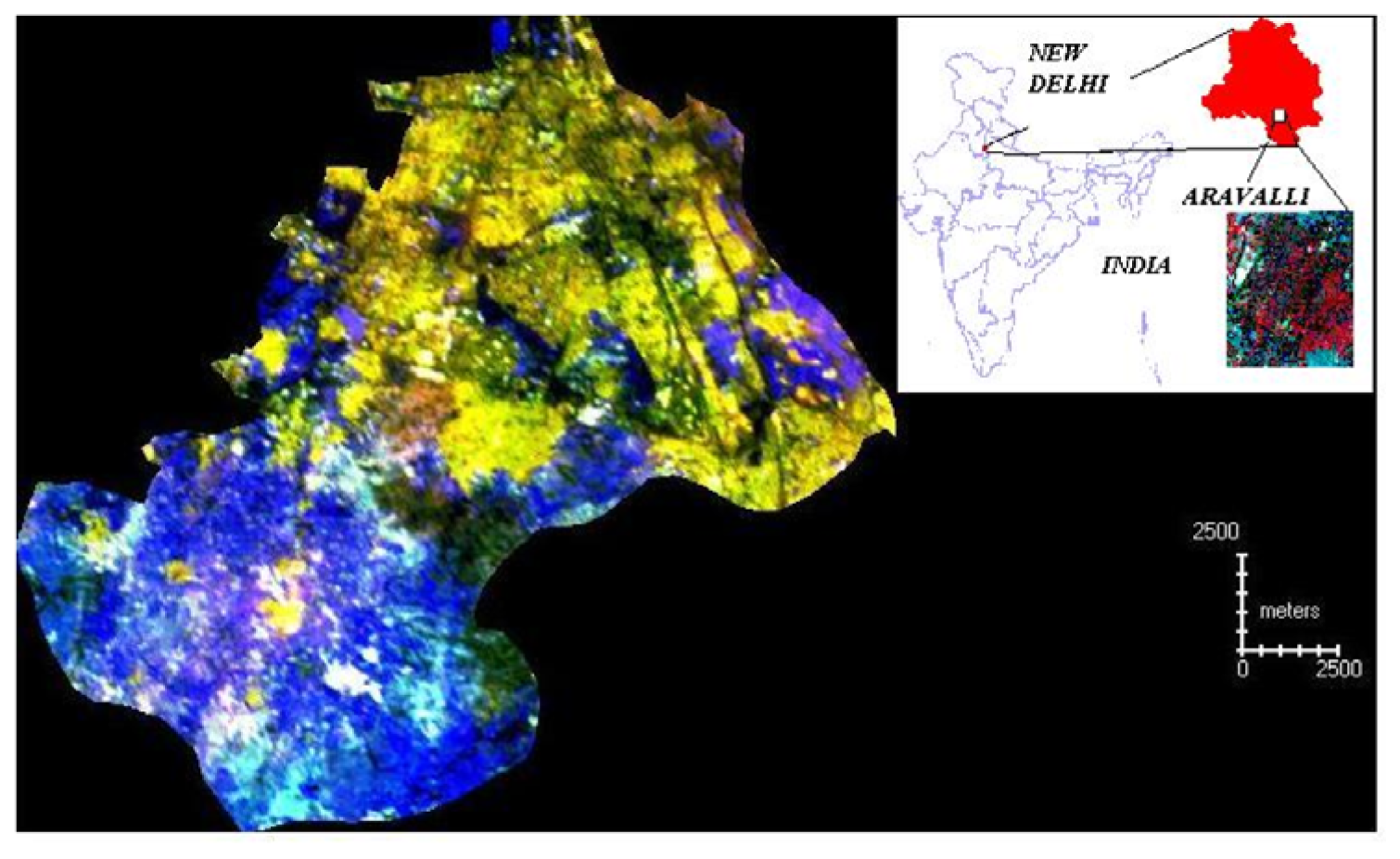
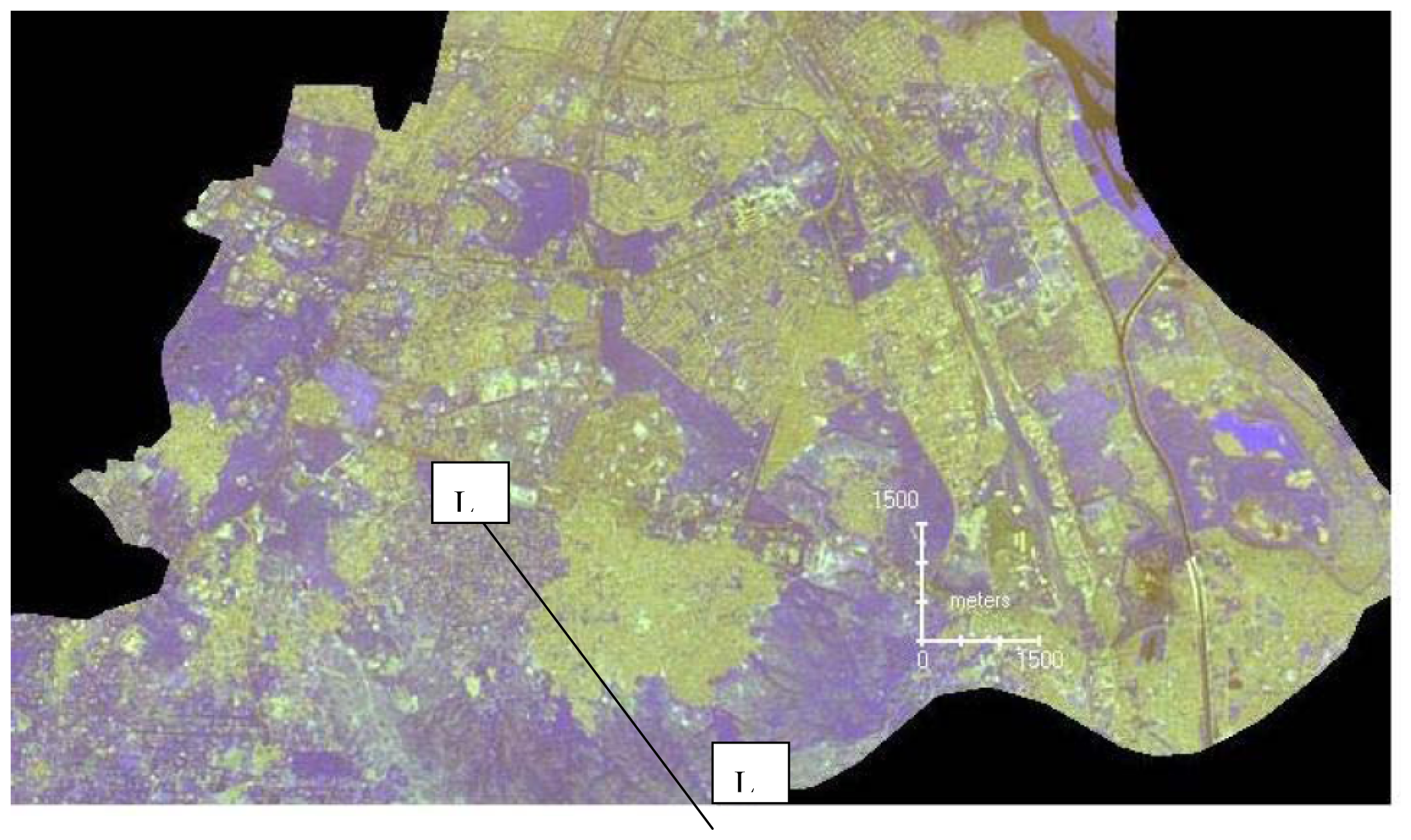
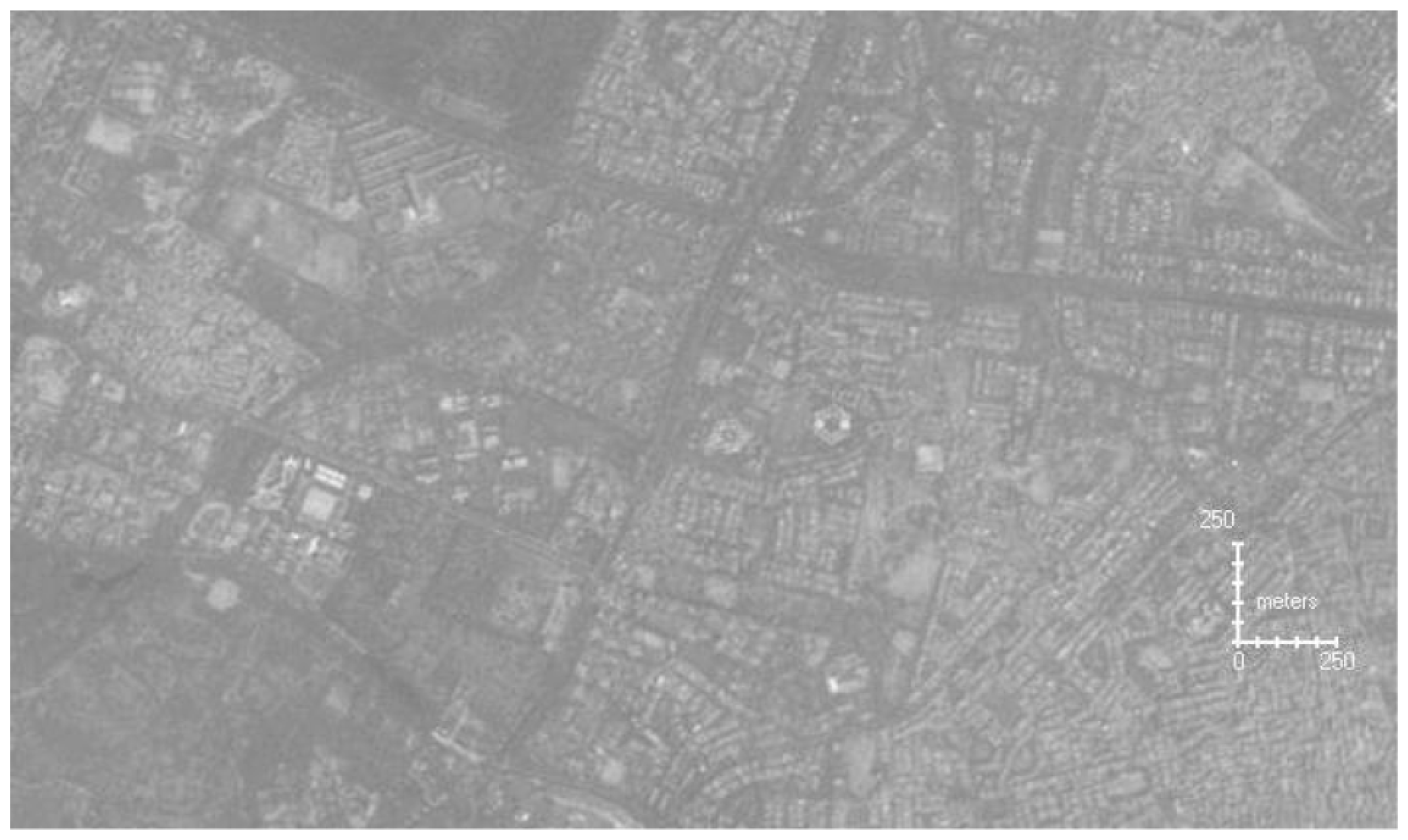
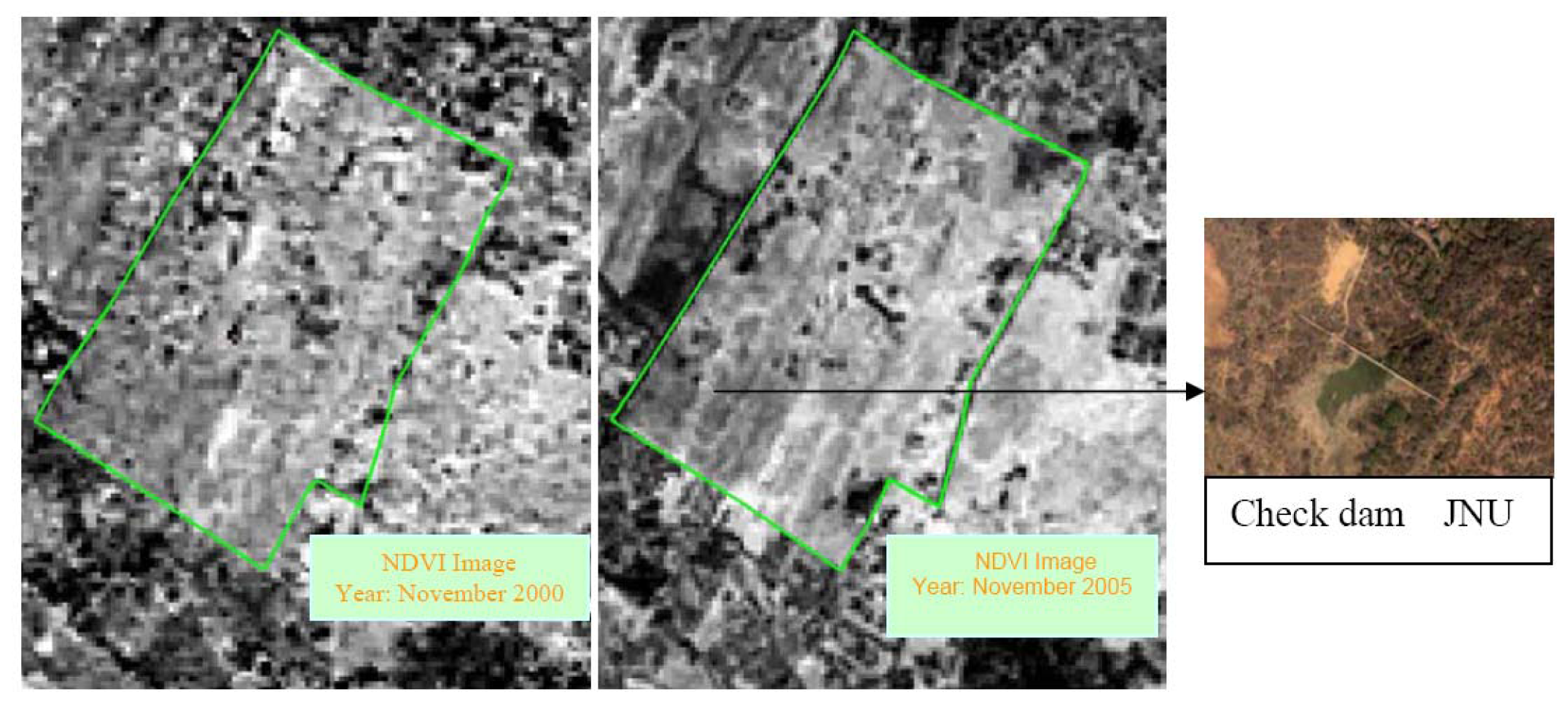
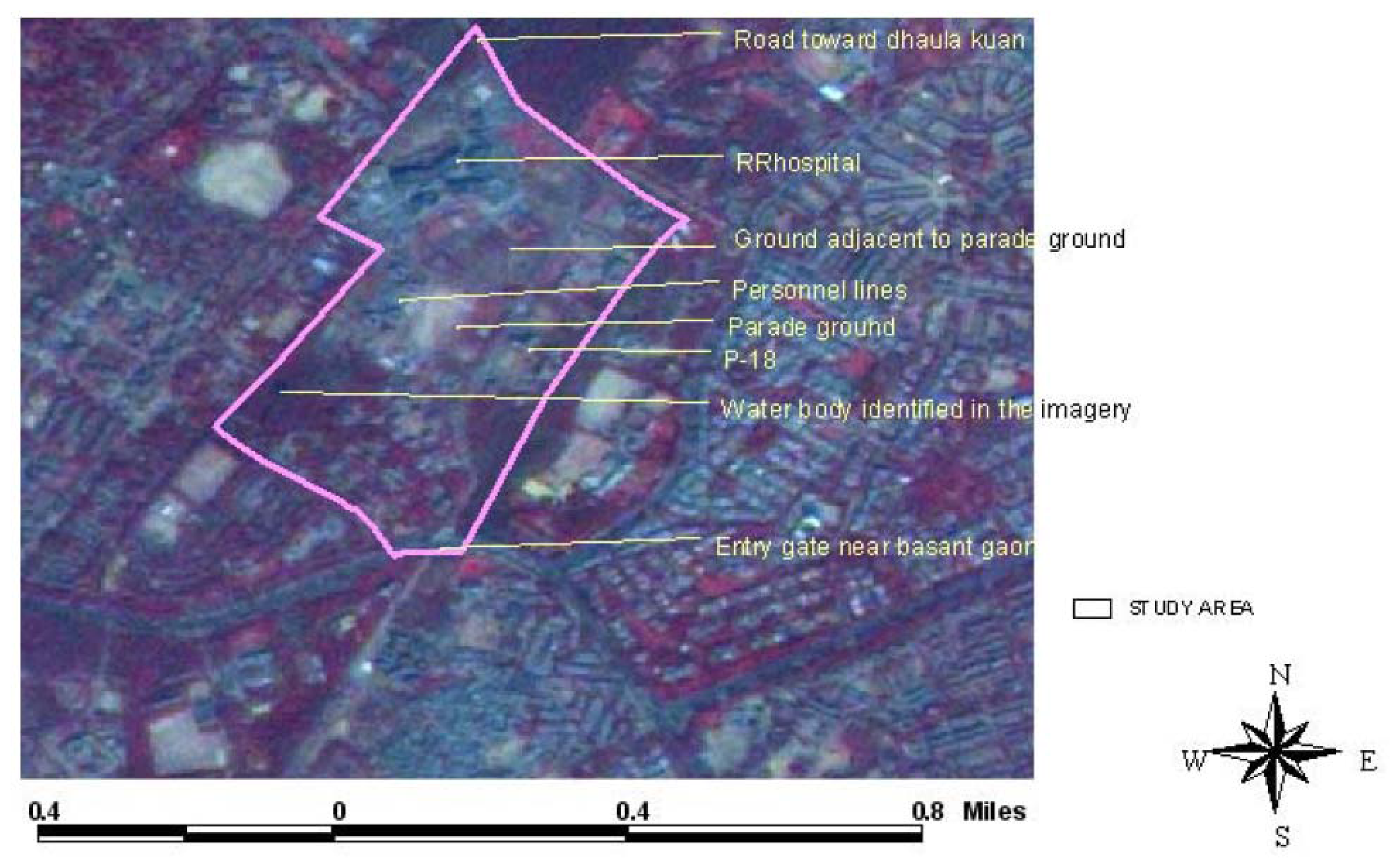
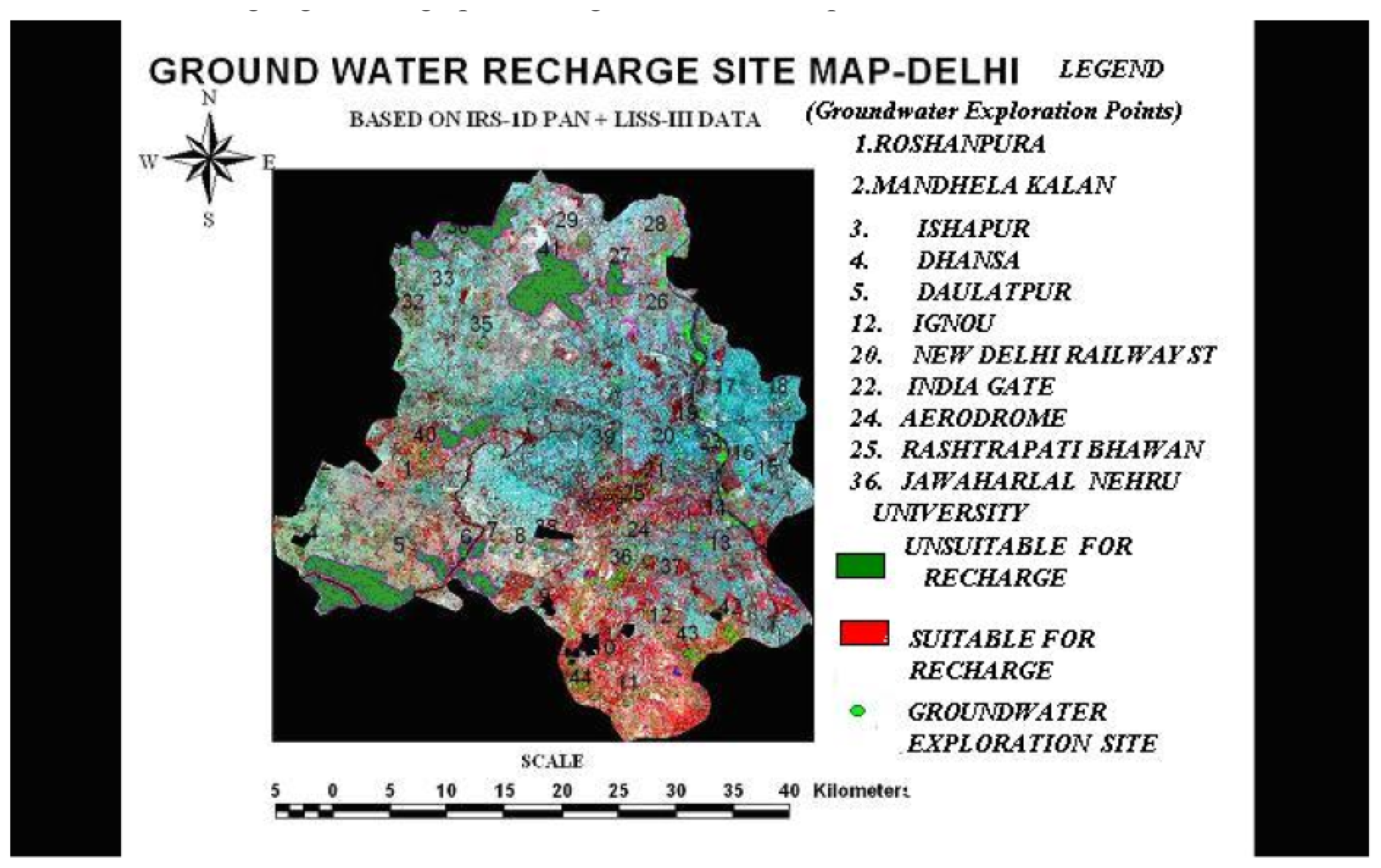
| Geomorphic Unit | Landform | Hydrogeology | Suitable flora | Sensor |
|---|---|---|---|---|
| Residual/structural hills | Rocky ridges tors and mounds. | Massive compact jointed quartzites. Poor ground water | Prosopisjulfiflora (Kabulikikar) Azadirachta indica (Neem) Miragyna parviflora (Kadamb) | Lineaments intersection and species identification is possible with IRS-1D LISS-III merged with PAN data. |
| Pediment | Undulating, eroded and dissected, shallow buried pediment with rock exposures. Thickly vegetated with scrub. | Weathered coarse gritty or arcosic quartzite with cover of clayey and silty soil along stream course. Moderate to good ground water prospects along fracture and shear zones. | Acacia Senegal (Kumta) Wringhitia tinctoria (Dudhi) Balanites aegyptiaca (Hingot) Streculia urens (Kullu) Boswellia serrata (Salai) | Groundwater potential Pediment and NDVI based species identification possible in AWIFS, IRS-LISS-III and PAN data. |
| Buried Pediment | Plain to gently sloping ground with occasional rock outcrops. | Silty clayey and at places gravelly soil derived from weathering of arcosic and gritty quartzite. Good ground water prospects | Ficus benghalensis (Bargad) Cassia fistula (Amaltas) Albizzia lebbeck (Siras) Fics religiosa (Peepal) Ficus infectoria (Pilkhan) Terminalia arjuna (Arjun) Bauhinia variegata (Kachnar) | Buried Pediment delineation with Pediment is possible by using IRS-PAN and LISS-III merged data but the landform units are difficult to infer by using AWIFS data. |
| pH | EC micromohos/cm | Hardness CaCO3(mg/l) | Ca (mg/l) | Mg (mg/l) | NO3(mg/l) | F (mg/l) | |||||||
|---|---|---|---|---|---|---|---|---|---|---|---|---|---|
| Prior | After | Prior | After | Prior | After | Prior | After | Prior | After | Prior | After | Prior | After |
| 8.5 | 7.0 | 694 | 137 | 460 | 394.5 | 92 | 148 | 73.3 | 22.06 | 296 | 148.2 | 0.9 | 0.9 |
© 2008 by MDPI Reproduction is permitted for noncommercial purposes.
Share and Cite
Mukherjee, S. Role of Satellite Sensors in Groundwater Exploration. Sensors 2008, 8, 2006-2016. https://doi.org/10.3390/s8032006
Mukherjee S. Role of Satellite Sensors in Groundwater Exploration. Sensors. 2008; 8(3):2006-2016. https://doi.org/10.3390/s8032006
Chicago/Turabian StyleMukherjee, Saumitra. 2008. "Role of Satellite Sensors in Groundwater Exploration" Sensors 8, no. 3: 2006-2016. https://doi.org/10.3390/s8032006




